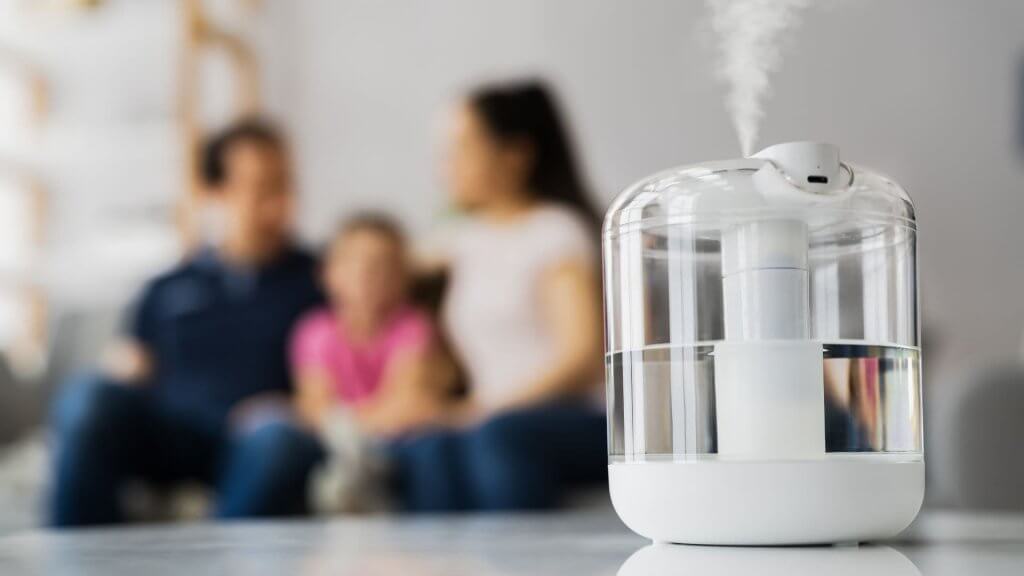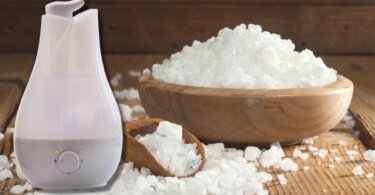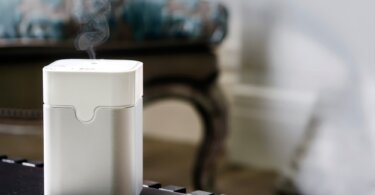Did you know that using a humidifier can cause mold and mildew growth in your home?
Here’s how: any humidifier has the potential to cause mold on your walls if the relative humidity in your home is already high, or if the humidifier isn’t maintained properly. If you’re going to use a humidifier, be sure to keep an eye on the relative humidity in your home by using a hygrometer. Also, clean your humidifier regularly according to the manufacturer’s instructions.
Today, I will explore the relationship between humidifiers and mold growth, and provide tips on using a humidifier safely. So, stick around to use this smart appliance the right way!

Can a Humidifier Trigger Mold Growth on Walls?
Yes, using a humidifier can trigger mold growth on walls. Let me explain why.
If you live in an area where the air is mostly harsh, you may be tempted to use a humidifier to help keep the air at a comfortable level. However, if not used properly, humidifiers can contribute to mold growth in your home.
Mold loves warm, humid environments, and your humidifier can create the perfect conditions for mold to flourish.
When you use a humidifier, the air in your home soaks up the extra moisture. This can cause the indoor humidity levels to rise beyond the ideal range for mold growth, which is between 60 and 80 percent.
The relative humidity is important because mold spores need additional moisture to grow. The higher the relative humidity, the more likely it is that mold will start growing. That’s why homes with excess levels of humidity are more likely to have mold problems.
If you already have a mold problem in your home, using a humidifier can worsen it. Mold spores are tiny and can quickly become airborne. When the air in your home is full of excess moisture, mold spores can float through the air and land on surfaces where they can start to grow.
To avoid making a mold problem worse, only use a humidifier when the recommended humidity levels in your home are below 50 percent.
Mold can also grow on the walls if there is high humidity in the airflow and not enough ventilation. So, if you’re using a humidifier, make sure you’re also increasing the ventilation in your home by opening windows and doors when possible.
How Using a Humidifier can Cause Mold Growth?
There are a few ways that using a humidifier can cause mold on the walls.
- When the humidifier is not properly maintained, it can become a breeding ground for mold spores.
- If the humidifier is not sized correctly for the space, it can increase the humidity level in particular spots, encouraging mold growth in those areas.
- If the humidifier is not properly vented, it can cause moisture buildup on the walls and create ideal conditions for mold growth.
If you’re using a humidifier to make the moisture level in your home more bearable, it’s important to take these precautions to prevent further problems.
- Make sure to clean your humidifier regularly
- Change their water as recommended by the manufacturer so that it doesn’t become a ground for mold.
- Only use distilled water.
Related article: What Kind of Water is Best to Use in a Humidifier?
How to Prevent Mold Issues When Using a Humidifier?
If using a humidifier is essential to control dryness levels in your place, but you’re worried about mold formation, fret not. Here are a few tips to keep in mind if you don’t want your home to become a perfect breeding ground for toxic mold:
1. Make Sure the House Humidifier Is Properly Sized
If you’re using a humidifier to make your home’s indoor air more comfortable, it’s essential to make sure that the unit is appropriately sized for your space. If the humidifier is too small, it can not moisturize the air enough.
Conversely, if the humidifier is too large, it will run too often, thus creating humidity levels that are too high. Also, it will waste energy.
To find the right size for your needs, check the manufacturer’s recommendations.
2. Empty the Water Tank Regularly
Another way to prevent the accumulation of mold in your humidifier is to ensure that the unit is properly maintained.
This means emptying the leftover water frequently and cleaning the water tank according to the manufacturer’s instructions.
Otherwise, the humidifier will keep recycling the airflow repeatedly, and airborne mold spores will find their way to your walls.
3. Ensure Enough Ventilation Near the Humidifier
If you want to prevent mold risk, ensure enough ventilation in your home. Doing this will allow the moisture content to dissipate instead of being trapped and creating an environment ripe for mold growth.
If possible, open a window or door to allow some fresh airflow. This will help the humidifier work more effectively. Also, don’t put the humidifier too close to a wall or other obstacles as this will block the airflow, and poor ventilation will instigate mold spots.
Make sure you check our selection of Best Humidifiers for Hard Water.
FAQs
What Are The Different Types of Mold?
Some common types of mold spores include Cladosporium, Chaetomium, Alternaria, and Aspergillus.
Related article: 10 Common Types of Mold in Homes
What Causes Mold in a Humidifier?
A few different things can cause mold issues in a humidifier.
- One is if the airflow in the room is not circulating and the warm moisture isn’t being removed from the unit properly. This can happen if the humidifier’s filter is dirty or if something is blocking the vents. If you notice evidence of mold in the humidifier, quickly clean its filter and dry it out before using it again.
- Another reason for mold in humidifiers is if the unit isn’t draining properly, which can be caused by a clogged drain or an issue with the float switch.
- Lastly, mold can also grow if the level of humidity setting is set too high. This way, the humidity levels will become too high as well.
Related article: How to Prevent Mold in a Humidifier
What Water Should I Use In My Humidifier?
It’s important that you use distilled water in your humidifier, as any other type of water – even filtered water – can lead to an accumulation of minerals that will eventually clog the unit.
Distilled water is also a better choice than tap water because it won’t contain any chlorine, bleach, or other harmful chemicals that can cause damage to the machine.
Related article: What Is The Best Water For a Humidifier
Summing Up
If you want to prevent mold issues, it’s important to keep your humidifier clean. Deep cleaning your humidifier on a regular basis and proper maintenance will help prolong the life of your humidifier and keep it working correctly.
Additionally, be sure to empty your humidifier’s water tank often and monitor the air humidity level in your home with a hygrometer to ensure that it doesn’t get too moist.
A dirty humidifier will only worsen the air quality in your home and put your home at risk of black mold formation. Therefore, it’s in your best interest to use clean, distilled water and change dirty filters regularly.
Related articles:
What Is The Brown Stuff In My Humidifier?
What Should I Set My Humidifier To?
How Much Electricity Does a Dehumidifier Use?





Leave a Comment